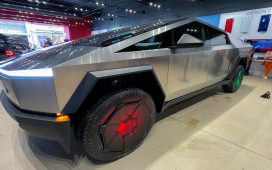Peugeot exited the U.S. market in 1991, driven out by a recession, slumping sales and the rising costs of U.S. regulations. The company had sold just 4,292 cars in 1990, nearly 80 percent below 1984 levels.
Tavares said in an interview in December with Automotive News Europe that ahead of the closing of the merger, the plan to bring Peugeot back to North America remained on track. He said the group’s team in Atlanta, Ga., was “bringing us many ideas in terms of logistics, in terms of maintenance, in terms of the distribution model, in terms of marketing communication.”
“Whatever we decide in the Stellantis world, all of those ideas will improve the way we go to market and the way we run the business,” he added.
Commentators in the U.S. have pointed to the poor sales of Stellantis brand Fiat in the country as a warning sign for Peugeot’s chances of re-establishing itself. Fiat has dropped the 500 minicar, 500L minivan and 124 roadster from its North American lineup, leaving just the 500X small crossover.
The U.S. is a famously difficult market to crack for new brands.
“It took the Japanese 20 years and the Koreans 30 years,” Brian Gu, president of Chinese EV start-up Xpeng, told Automotive News Europe in a recent interview to explain why he preferred to start the company’s global expansion in Europe instead.
Peugeot will concentrate on its core markets of Europe, the Middle East, Africa and Latin America, Imparato said. “In the next months I have to feed my base camp, as well as come back on track in China,” he said.








